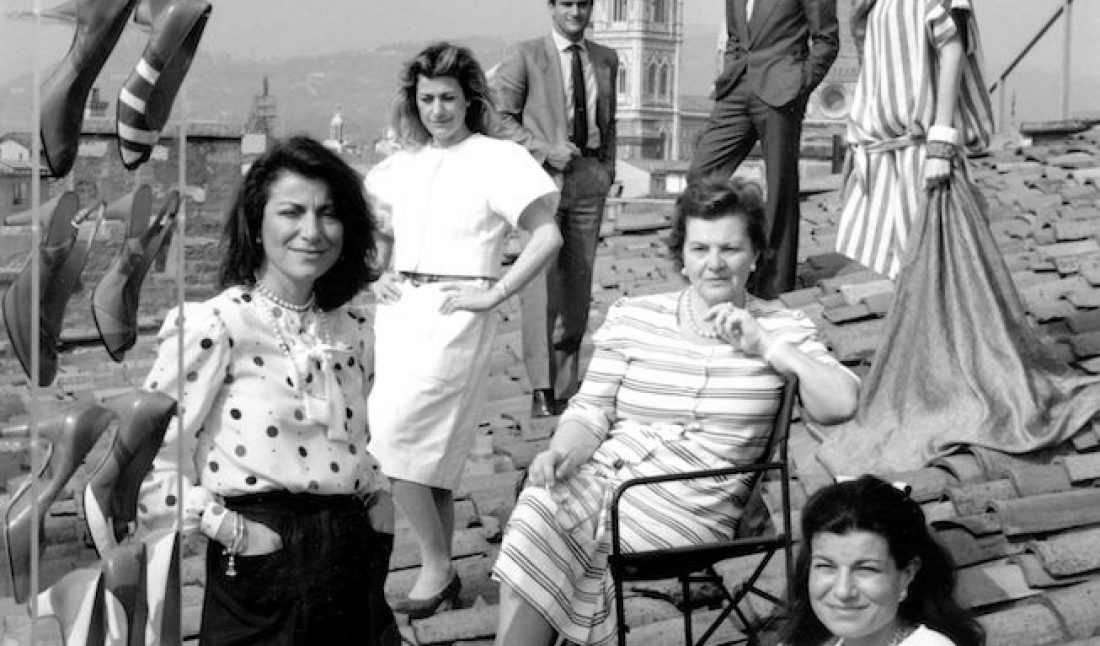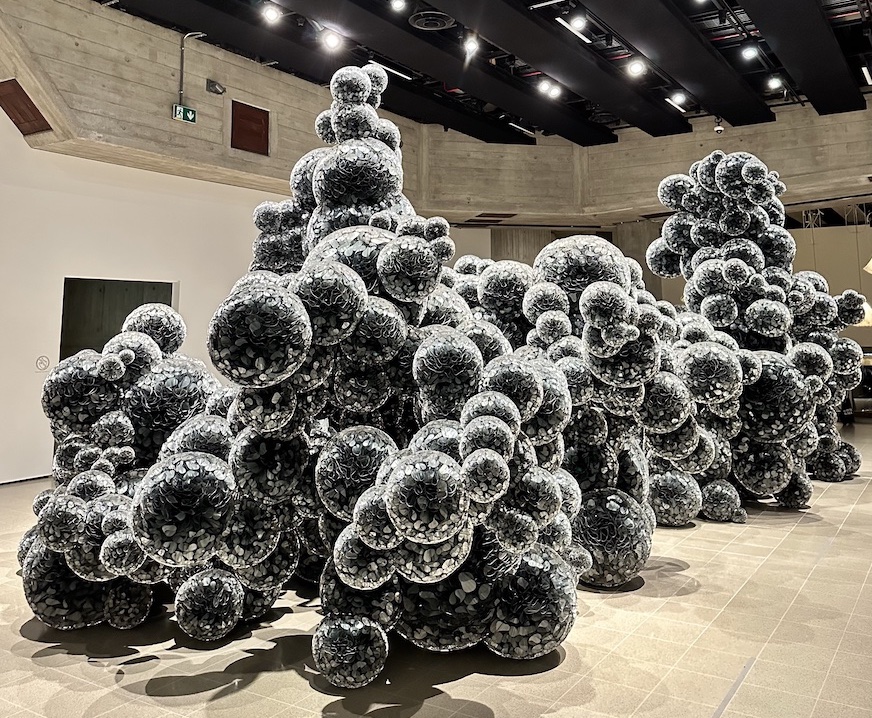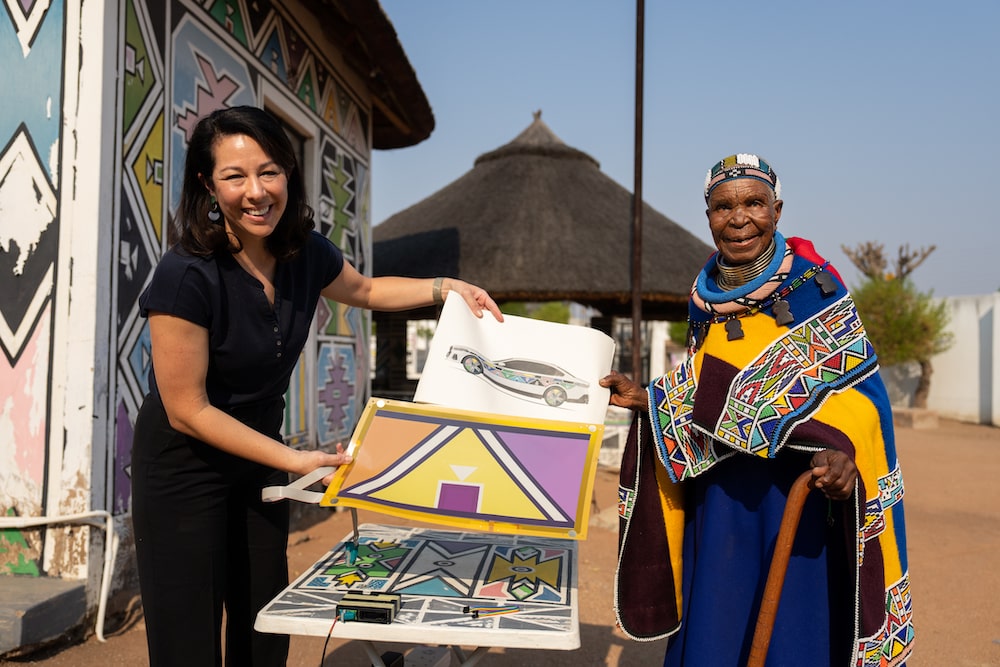Debuting this May, “Women in Balance” is a sweeping exhibition and tribute to Wanda Miletti Ferragamo at Museo Salvatore Ferragamo, curated by Stefania Ricci and Elvira Valleri. Currently on view through May 2023 in Florence, Italy, the heart of the presentation shares the story of the late wife of Salvatore Ferragamo who, with her brilliance and poise, steered the brand from 1960 until her passing in 2018.
At nearly 19 years of age, Wanda married Salvatore in Naples. They would go on to have six children, three boys and three girls, who would all eventually join the growing family business. Wanda, a wife, mother, and homemaker, at once became a businesswoman upon her husband’s death in 1960. She skillfully united the historic role of a woman dedicated to the well-being of her home, with loyalty and care for her family’s company. As she evolved into both the head of her household and business, and after six decades of extraordinary success, Wanda still hesitated to take credit for the Ferragamo brand.
 Wanda Ferragamo, courtesy of Ferragamo.
Wanda Ferragamo, courtesy of Ferragamo.
 Salvatore Ferragamo styles, courtesy of Ferragamo.
Salvatore Ferragamo styles, courtesy of Ferragamo.
The exhibition honors the heart, soul, and mind of Wanda, and as she would have insisted, also imparts the stories of other women who, between the late 1950s and the early 1960s, balanced personal achievements with familial devotion. Framed within the context of post-WWII Italy, and its “economic miracle,” the showcase reveals the profound cultural and societal transformations that can only be fully appreciated and explored in hindsight. Many of the celebrated women sought to construct a different society than the one in which they were born into: one with freedom and agency for all.
In carrying on Salvatore’s dream and legacy after his death, Wanda said, “Women are, in a way, the keepers of the affection that sustains the relationship. Gradually I found the energy I needed to move forward. I had only ever taken care of my family and suddenly I had to see to everything. Management, restocking, technical issues, tracking expenditure. I believe that all of us women, or nearly all of us, could easily run a company if we’re already able to judiciously run a household.”
 Giosetta Fioroni, “Birth of an Op Venus,” 1965, oil on canvas; courtesy of
Mancini-Orio collection, Pesaro.
Giosetta Fioroni, “Birth of an Op Venus,” 1965, oil on canvas; courtesy of
Mancini-Orio collection, Pesaro.
 Oriana Fallaci photographed by Ugo Mulas, 1966; © Ugo Mulas, courtesy of Ferragamo.
Oriana Fallaci photographed by Ugo Mulas, 1966; © Ugo Mulas, courtesy of Ferragamo.
“Women in Balance” aims to examine the public/private dichotomy in post-WWII Italy, which revealed unfamiliar and compelling facets to the relationships among people, family, civil society, and the state. Women gained the right to vote and began to make their presence known in the workplace. Cultural representations, imagery, and fashions associated with women began to change, shifting Italian society and lifestyles into modernity. The American way of life had a large influence, and offered new visions of individuality.
The Italian Prime Minister’s office (Department for Equal Opportunities), in a 2003 anthology of Italian women, professed Wanda Ferragamo as one of the first leaders of Italian industry. In a country where family-owned and family-run businesses are the standard, many women finally found opportunity after centuries of being unable to inherit the establishments that the men in their family had created. Today’s “new humanism” is thought to be an opportunity for the rebirth of society. In this vein, the exhibition and its initiatives spark contemporary reflection on societal changes and an evolved vision of equality for all.
 Antonia Campi, “Large vase/sculpture with three animal-shaped elements,” 1953, ceramics and enamel; courtesy of Marco and Pietro Visconti collection, Rocchetta Tanaro (Asti).
Antonia Campi, “Large vase/sculpture with three animal-shaped elements,” 1953, ceramics and enamel; courtesy of Marco and Pietro Visconti collection, Rocchetta Tanaro (Asti).
 Salvatore and Wanda Ferragamo with Audrey Hepburn at Palazzo Spini Feroni, 1954; photo by Locchi, courtesy of Ferragamo.
Salvatore and Wanda Ferragamo with Audrey Hepburn at Palazzo Spini Feroni, 1954; photo by Locchi, courtesy of Ferragamo.
 Gae Aulenti, “Bat lamp,” 1965, steel and methacrylate; courtesy of Max Mara Business Archive, Reggio Emilia.
Gae Aulenti, “Bat lamp,” 1965, steel and methacrylate; courtesy of Max Mara Business Archive, Reggio Emilia.
 Carla Badiali, “Sweets 6018,” 1955, tempera on paper board; courtesy of private collection, Como.
Carla Badiali, “Sweets 6018,” 1955, tempera on paper board; courtesy of private collection, Como.











